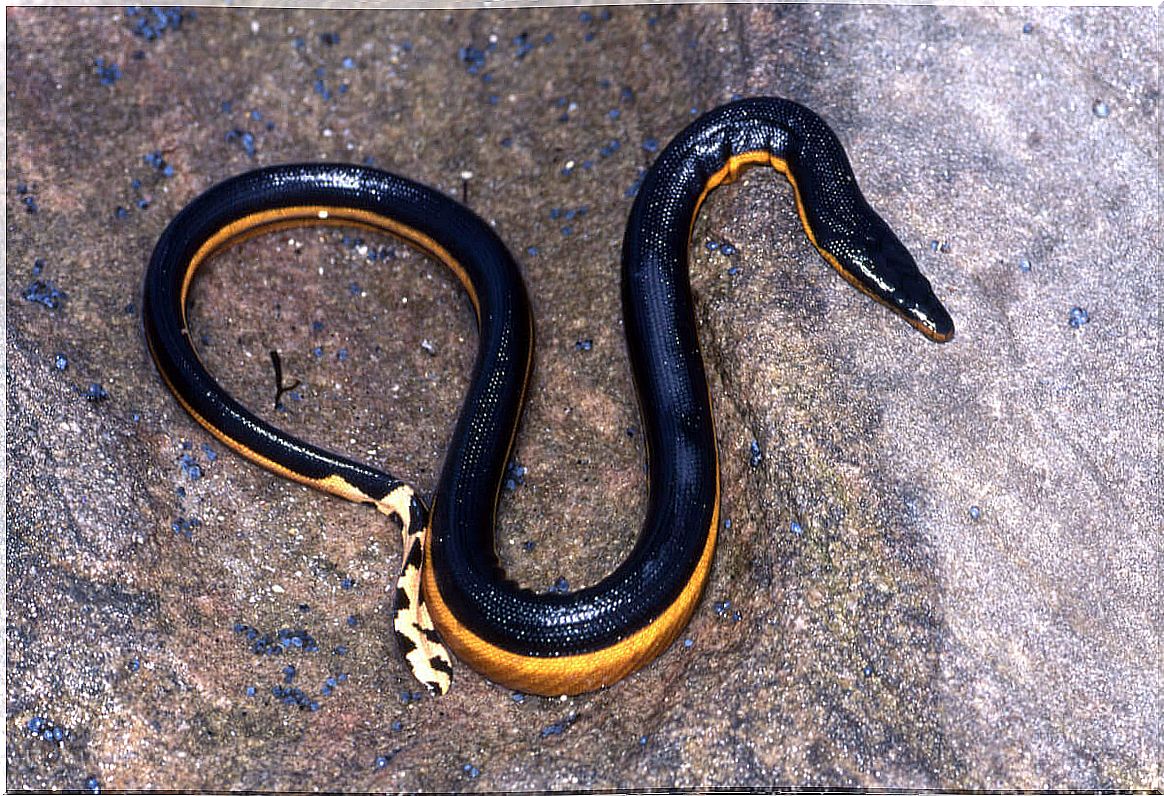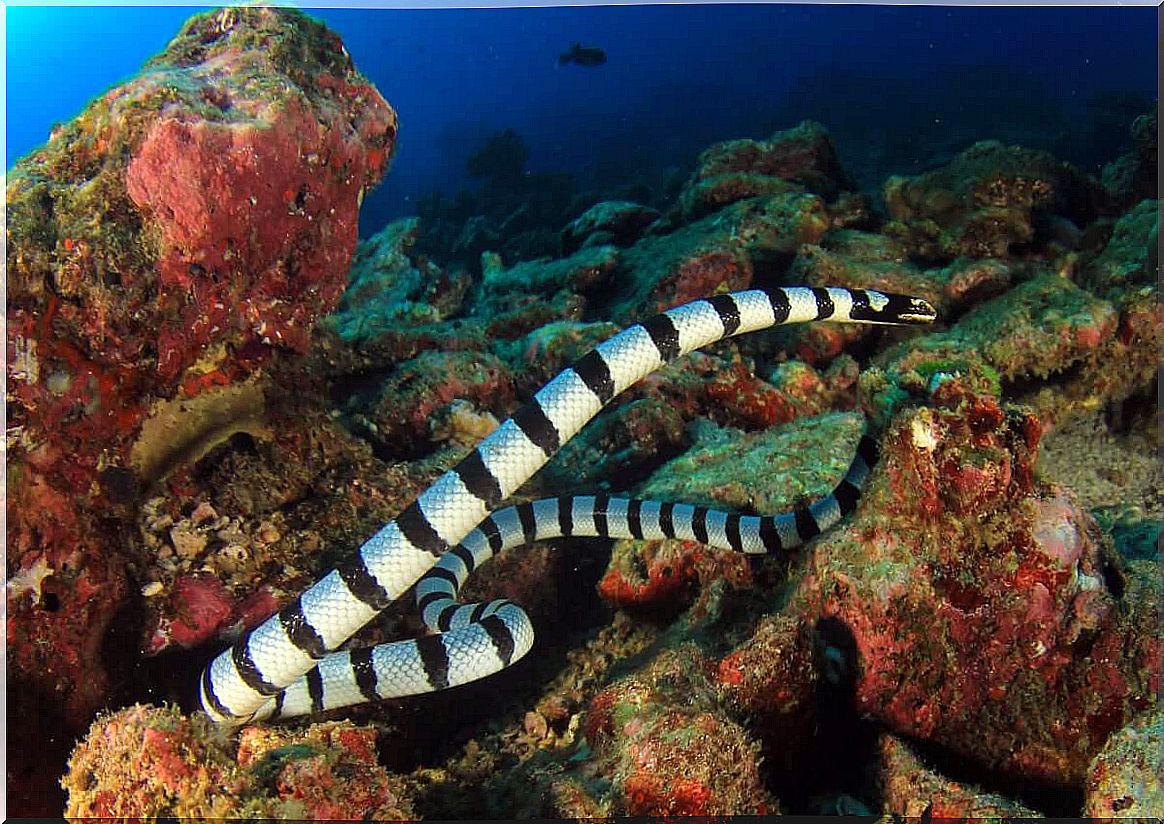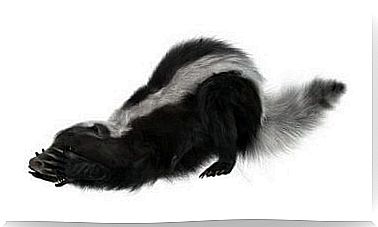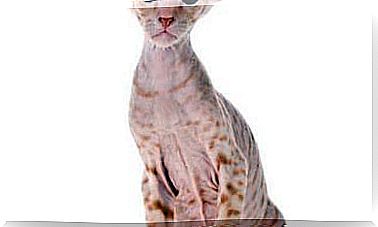How Are Sea Snakes Classified?

Sea snakes are a subfamily of reptiles fully adapted to aquatic life. Most are vulnerable on land and rarely come out of the water, as their swimming-adapted bodies make them difficult to crawl.
These reptiles are classified into the families of the most venomous snakes in the world ( Elapidae) , to which their counterparts cobras, mambas and coral snakes belong. If you want to learn more about these fascinating animals, keep reading.
Sea serpents, but not from the Atlantic
These snakes are adapted to marine life but are not found in the Atlantic Ocean, although the Caribbean regions provide an ideal habitat for these animals.
These reptiles inhabit the Pacific Ocean and Indian Ocean, from Japan to New Zealand and from South Africa to Central America. It is believed that their absence in the Atlantic is due to the fact that they cannot reach it physically, as the isthmus of Panama is a geological barrier that keeps them separate from that ocean.
Anyway, this did not prevent the proliferation and spread of sea snakes, a group of great biological diversity, comprising approximately 62 species classified in 17 different genera. The genus Hydrophis is the largest of them.
There are two subfamilies of sea snakes:
- Hydrophiinae, which includes most species. They are fully marine reptiles, which do not need to surface except to breathe, as, unlike fish, they do not have gills. These snakes can spend up to five hours underwater.
- Laticaudinae, with a single representative genus under the name Laticauda, which includes eight species. These animals have an amphibious life, as they reproduce on land.
Next, let’s look at each of these two broad categories.
Hydrophiinae , the true sea serpents
Sea snakes have great anatomical differences from their terrestrial companions. For example, they all have a flat, oar-shaped tail – which helps them to swim – and their bodies are compressed laterally, like an eel.
The adults of most species of this subfamily reach between 120 and 150 centimeters in length, but larger specimens can reach three meters in length, such as the adults of the species Hydrophis spiralis.
Unlike land snake species, which have overlapping scales to protect themselves from abrasion against the ground, the scales of most pelagic sea snakes do not overlap.
This is a general rule, but we must exclude some species that inhabit corals, as these have overlapping scales with which to protect the body from abrasion caused by corals on the skin.

Snakes of the Hydrophiinae subfamily are carnivores, feeding on fish (especially eels), but also on molluscs, crustaceans and even fish eggs. To hunt, they inject the poison into the captured prey, which soon dies because of its toxic effect.
Another difference of the Hydrophiinae subfamily in relation to other snakes is its reproduction, since the individuals are ovoviviparous, that is, the offspring develop and hatch inside the mother. Generally, seven to nine offspring are born, although there are exceptions for very numerous progenies in certain species.
The venom of sea snakes is very powerful and surpasses that of snakes, as it is composed of a mixture of neurotoxins and myotoxins. The hook-nosed sea snake is one of the most venomous species, but bites in humans are rare and probably caused by disturbance, as this species is quite peaceful.
Amphibian snakes of the genus Laticauda
They are also sea serpents, although in this case they do not spend their entire lives in water. Their habits are aquatic and terrestrial, as, in fact, their reproduction occurs on land and, unlike the previous ones, they are oviparous, as they lay their eggs on the terrestrial surface.
Snakes of the genus Laticauda have nostrils on both sides, while those of other sea snakes are at the top of their snouts, which they take out of the water to breathe. These snakes can close their nostrils through valves when they submerge.
The snake Laticauda colubrina is one of the most representative species. It lives in the tropical waters of the Indo-Pacific Ocean and stands out for its long (almost cylindrical) body with uniform black and silver bands.

As seen, sea serpents are divided into two large subfamilies with distinct characteristics. These snakes have a number of amazing adaptations to the aquatic environment.









